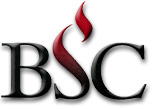The following is a summary of the rules for naming simple compounds. Use the menu bar at the left to navigate through the page.
The first step in naming a compound involves identifying what sort of compound it is.
Ionic: These will consist of elements from opposite sides of the periodic table. They are further subdivided into three types for nomenclature purposes.
Binary Ionic (Type I): These consist of a group 1 (Li, Na, K, etc)or group 2 metal cation Mg, Ca, Sr, etc.) combined with another element. These cations have a fixed charge (group 1 is +1 and group 2 is +2)
Binary Ionic (Type II): These consist of a metal cations (often transition metals) that may exhibit a number of different oxidations states. (examples Cu, V, Pb ) combined with one other element.
Polyatomic Ionic: These compounds contain polyatomic ions. You must be able to recognize a polyatomic ion (examples NH4+, SO42- in NH4Cl and Na2SO4)
Binary Molecular: These compounds contain two non-metallic elements (S and O, N and Cl, etc.)
Acids: these compounds must contain a Hydrogen that is can easily dissociate
Binary Acids: These consist of hydrogen bonded to a group 7 anion (over simplfied) and dissolved in water. (examples: aqueous solutions of HF, HCl, HBr, and HI)
Oxyacids: These compounds have hydrogen bonded to the oxygen of a polyatomic ion. (examples HNO3, H2SO3, etc...)
![]() Binary
Ionic Compounds (Type I)
Binary
Ionic Compounds (Type I)
![]() Binary
Ionic Compounds (Type II)
Binary
Ionic Compounds (Type II)
![]() Ionic
Compounds with Polyatomic Ions
Ionic
Compounds with Polyatomic Ions
| Cation is named first and the anion second | |
| Use names of the polyatomic ions. These MUST be memorized. | |
|
For oxyanions (those containing and element + oxygen) the following prefixes and suffixes are added to the root
|
|
|
Examples:
|
![]() Binary
Molecular (two elements near one another on the periodic table)
Binary
Molecular (two elements near one another on the periodic table)
![]() Binary
Acids (Hydrogen with No Oxygen)
Binary
Acids (Hydrogen with No Oxygen)
![]() Oxyacids
(Hydrogen bonded to Oxygen)
Oxyacids
(Hydrogen bonded to Oxygen)
Bridgewater Homepage Chemistry Homepage Search Bridgewater Search Chemistry Pages

E-mail: shaefner@bridgew.edu
The number of times this page has been accessed:
Created 08/12/02
Last Modified: